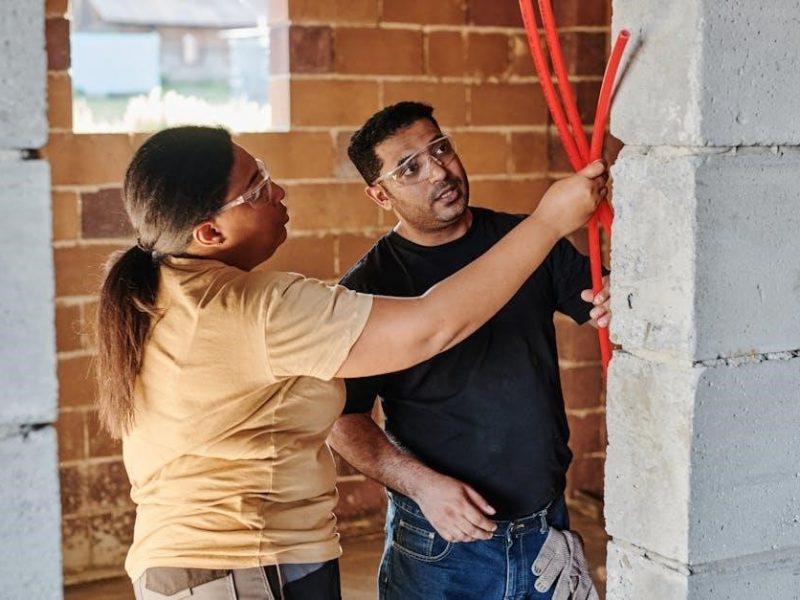4L60E Manual⁚ An Overview
The 4L60E is a popular automatic transmission‚ commonly found in GM vehicles. It’s known for its four speeds and electronic controls‚ replacing the older Turbo 700R4. This transmission has undergone design changes‚ requiring careful consideration during swaps and upgrades.
4L60E Design Changes Over the Years
The 4L60E transmission has seen several revisions throughout its production run. Early models‚ particularly those before 1995‚ differ significantly from later versions. Notably‚ the manual valve design changed mid-1995‚ impacting modifications. It’s important to note that 1993‚ 1994‚ and 1995 each had unique production runs. Later‚ there are 1996-2000 units and further iterations in 2001-2006‚ 2007-2008‚ and 2009-2013/14. These changes include modifications to internal components‚ valve body designs‚ and electronics. These changes mean that not all 4L60E transmissions are interchangeable. Therefore‚ selecting the correct year range is crucial for successful swaps. The 4L60E’s design evolved to enhance performance and durability but also created compatibility challenges. Understanding these design changes is vital for proper maintenance and modification of this transmission.
Compatibility of 4L60E Across Different GM Models
The 4L60E transmission’s compatibility varies across GM models due to differences in vehicle platforms‚ drivetrain configurations‚ and electronic controls. Notably‚ 2WD and 4WD versions have different output shafts‚ making them non-interchangeable without modifications. Truck transmissions‚ often 4WD‚ have a shorter output shaft for transfer case connection‚ while car transmissions have a longer shaft. Certain F-body 4L60Es from 1998-2002 are compatible with 2WD applications. However‚ for a 4×4‚ a 2001-2006 4L60E/65E is typically required. Swapping requires attention to flexplates and torque converter interchange. Furthermore‚ electronic control differences exist‚ meaning that a PCM from an incompatible year may not work. Therefore‚ careful consideration of the specific year and vehicle model is critical when considering a 4L60E swap.
4L60E Swaps and Conversions
Swapping the 4L60E is common‚ with options such as converting to a 5-speed manual or upgrading to a 4L80E. Careful planning is needed‚ especially for 2WD to 4WD changes.
4L60E to 5-Speed Manual Conversion
Converting from a 4L60E automatic to a 5-speed manual transmission is a significant undertaking‚ often driven by a desire for more control or improved towing capabilities. This swap requires careful consideration of several factors. You’ll need to source a compatible manual transmission‚ like the NV3500 or NV4500. Furthermore‚ a flashed computer may be needed for proper engine management. The swap also involves changes to the pedal assembly‚ clutch hydraulics‚ and potentially the driveshaft. The neutral safety switch and reverse light wiring also need to be addressed. Budget considerations are essential‚ as this conversion can range from $3‚800 to $4‚500. While challenging‚ many enthusiasts find the enhanced driving experience worth the effort.
4L60E to 4L80E Transmission Swap
Upgrading from a 4L60E to a 4L80E transmission is a popular choice for those seeking increased strength and durability‚ especially in high-performance applications. The 4L80E is a robust transmission known for handling significantly more power than the 4L60E. This swap requires more than just a direct replacement. It often necessitates modifications to the transmission crossmember‚ driveshaft‚ and wiring harness. The 4L80E’s larger size may also require adjustments to the transmission tunnel. Careful attention must be paid to the wiring differences‚ including the connector and the need for a modified or standalone controller. This upgrade offers enhanced reliability and is well-suited for high-horsepower builds‚ making it a worthwhile investment for performance enthusiasts.
Swapping 4L60E Between 2WD and 4WD Vehicles
When considering a 4L60E transmission swap between two-wheel-drive (2WD) and four-wheel-drive (4WD) vehicles‚ it’s crucial to understand that they are not directly interchangeable. The primary difference lies in the output shaft; 4WD transmissions feature a shorter output shaft designed to connect to a transfer case via an adapter. In contrast‚ 2WD transmissions have a longer output shaft that directly connects to the driveshaft. Swapping requires the correct output shaft to match the vehicle’s configuration. Attempting a direct swap will lead to incompatibility issues. The transfer case adapter is needed for 4wd. The correct transmission must match the vehicle to ensure proper fitment and functionality. It is not recommended to directly swap between these two different configurations.
4L60E Modifications and Upgrades
Several modifications can enhance the 4L60E’s performance. These include the 4L60E-HD2 reprogramming kit and upgrading to a 5-pinion front planet. These upgrades can improve shift quality and overall durability.
4L60E-HD2 Reprogramming Kit
The 4L60E-HD2 reprogramming kit is a popular modification for those seeking improved performance from their 4L60E transmission. This kit aims to enhance shift firmness and reduce slippage‚ leading to a more responsive driving experience. It is often sought by enthusiasts looking to increase the transmission’s holding power‚ particularly during 1-2 and 3-4 shifts. The kit is available from various suppliers‚ and it’s crucial to follow the instructions carefully during installation. However‚ it’s important to note that the Trans-Go modification included in some kits may not be necessary for later manual valves (mid-1995 and up). Users should research and confirm compatibility with their specific transmission year to avoid potential issues. Proper installation and understanding of the kit’s components are vital for achieving the desired results.
Upgrading to 5-Pinion Front Planet
Upgrading to a 5-pinion front planet is a common modification aimed at increasing the durability and strength of the 4L60E transmission. The factory 4-pinion design is often considered a weak point‚ particularly in high-stress applications or when dealing with increased horsepower and torque. By installing a 5-pinion front planet‚ the load is distributed more evenly‚ reducing the risk of gear failure. This upgrade involves replacing the existing front planetary carrier with one that has five pinions instead of four. This modification is beneficial for users looking for increased reliability and longevity from their 4L60E‚ especially those who frequently tow or engage in performance driving. It is often done in conjunction with other performance upgrades to further enhance the transmission’s overall capability and resilience. Consult GM part numbers and detailed instructions for a successful install.
4L60E Specific Issues and Solutions
The 4L60E transmission‚ despite its popularity‚ faces common issues like wear and tear‚ and also mechanical failures. Rebuilding‚ troubleshooting and manual valve modifications are often needed to address these problems.
Common Problems and Rebuilding Tips
The 4L60E transmission is known for some common failure points‚ often stemming from wear and tear on internal components. These include issues with the 1-2 and 3-4 shift servos‚ which can affect shift quality and performance. The valve body can also develop problems‚ leading to erratic shifting patterns. Over time‚ the clutches and bands may wear out‚ requiring replacement. When rebuilding‚ it’s crucial to pay close attention to tolerances and ensure all components are within specifications. Upgrading to stronger parts‚ such as a 5-pinion front planet‚ can improve durability. Careful attention to detail and proper assembly techniques are essential for a successful 4L60E rebuild. Remember to check for leaks and ensure proper fluid levels post-rebuild. Regular maintenance can also extend the life of this transmission.
Manual Valve Modification Considerations
Modifying the 4L60E manual valve can alter shift characteristics‚ providing firmer or more aggressive shifts. However‚ this modification requires careful consideration of the specific valve body type‚ as later models have different designs. It is crucial to avoid performing the Trans-Go modification on late-model manual valves‚ as it is unnecessary and can cause issues. Incorrect modifications can lead to poor shifting‚ transmission damage‚ and even failure. Furthermore‚ altering the manual valve can impact the overall functionality and reliability of the transmission. Therefore‚ detailed research and a thorough understanding of the 4L60E’s internal workings are essential before attempting any manual valve modification. It’s often best to consult with a professional transmission specialist to ensure the desired outcome and avoid potential harm.
4L60E Wiring and Control
The 4L60E transmission relies on electronic controls. Understanding its wiring is crucial‚ especially when swapping or using standalone controllers. Differences in wiring exist between 4L60E and 4L80E transmissions‚ requiring attention during swaps.
4L60E Standalone Controller and Wiring Harness
A standalone controller and wiring harness are essential for operating a 4L60E transmission in a vehicle that didn’t originally come with one. These systems allow for full manual control and lock-up functionality. They often include features like manual shift conversion capabilities. The wiring harness connects the transmission to the controller‚ ensuring proper communication between the two components. When considering a swap‚ especially in older vehicles or custom builds‚ a standalone system becomes crucial. These standalone systems help bypass the need for the original vehicle’s computer‚ simplifying the process. Proper installation and wiring are important for proper transmission operation and longevity. These kits are also useful for conversions to older vehicles.
Wiring Differences for 4L60E to 4L80E Swap
Swapping from a 4L60E to a 4L80E transmission requires careful attention to wiring differences. The 4L80E has a different connector and pinout than the 4L60E‚ necessitating modifications to the existing wiring harness. Adapting the wiring involves repinning the connector‚ ensuring proper signal transmission to the transmission control module. Failure to properly address these differences will cause the transmission to not function correctly. Specific guides and schematics for 4L60E to 4L80E wiring swaps are available‚ and should be consulted. It is also crucial to identify the correct wiring for each specific year of these transmissions. Some kits include wiring adapters‚ but these should be chosen carefully. Proper wiring is critical for achieving a successful transmission swap.

